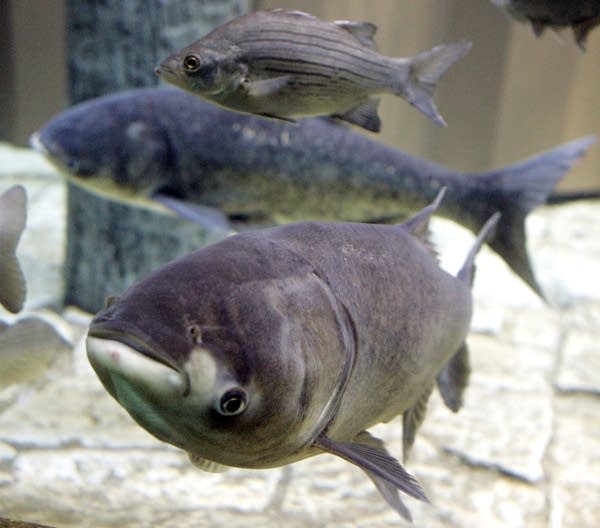Report: Asian carp could reach all 5 Great Lakes
Go Deeper.
Create an account or log in to save stories.
Like this?
Thanks for liking this story! We have added it to a list of your favorite stories.

Asian carp could find enough food and breeding areas to reach all five of the Great Lakes within 20 years if allowed to gain a foothold, a scientific report said Thursday.
The risk analysis by U.S. and Canadian researchers said just 10 mature females and even fewer males could establish a population in the lakes, assuming they find rivers suitable for spawning. Previously, some officials have said hundreds of the carp probably would be needed to launch a successful invasion.
Their likeliest pathway to the lakes is a network of canals and rivers in the Chicago area, where their DNA has been detected just 6 miles from Lake Michigan, the report said.
If they evade an electric barrier and reach the lake, they could proliferate in bays and tributary rivers, eventually moving north to Lake Huron and then south into warm, shallow Lake Erie, which has the region's most abundant fish population and would be ideal carp habitat.
Turn Up Your Support
MPR News helps you turn down the noise and build shared understanding. Turn up your support for this public resource and keep trusted journalism accessible to all.
It would take longer for them to infest Lakes Superior and Ontario. But they could survive in both, the report said, contrary to some experts who contend Superior would be too cold.
The analysis, released by Canada's Fisheries and Oceans ministry after a 16-month study, is "sobering," said Michael Hansen, chairman of the Great Lakes Fishery Commission. "It concludes that arrival of Asian carps is looming, and should the fish become established in the Great Lakes, that their effects on the ecosystem would be severe."
Bighead and silver carp have migrated northward on the Mississippi River and its tributaries since escaping from Southern sewage lagoons and fish farms, where they were imported in the 1970s. Researchers are studying their impact on native fish.
The U.S.-Canadian report says the carp, which gorge on tiny plants and animals called plankton, would reduce the food supply for small Great Lakes fish, causing them -- and eventually bigger fish that feed on them -- to decline. The carp also could gobble larvae of prized sport fish such as walleye and yellow perch, it said.
"Ever since these non-native fish first escaped and began to breed prolifically in the rivers of the Midwest, the questions everyone has been asking are: 'Can a breeding population survive in the Great Lakes and would it be a significant problem if they did?'" said Marcia McNutt, director of the U.S. Geological Survey. "Now we know the answers and unfortunately they are 'yes and yes.'"
Dear reader,
Political debates with family or friends can get heated. But what if there was a way to handle them better?
You can learn how to have civil political conversations with our new e-book!
Download our free e-book, Talking Sense: Have Hard Political Conversations, Better, and learn how to talk without the tension.





